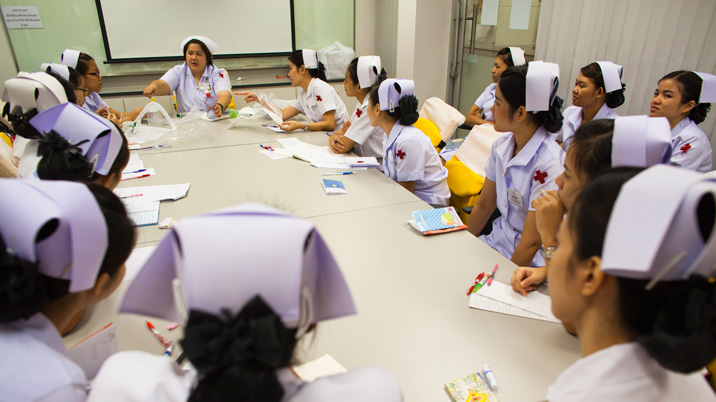BANGKOK, July 31, 2012--- 50-year-old Somjai Trisirithanachote, a housekeeper who works at a building in Bangkok, had been ill for several months. “A health activist told me about the Universal Coverage Health Scheme (UCS) and I applied for it. I went to a public hospital using the UCS card and the doctor there found the cause of my illness, hypertension. My health improved significantly after visiting the hospital twice,”
Thailand’s health achievements
Ms. Trisirithanachote is one of the many Thais who have benefited from the UCS. Initially, under the scheme, no patient paid more than Baht 30.00 (about USD$1.00) per visit to accredited hospitals and health centers for inpatient or outpatient care, including drugs. In 2007, the co-payment was abolished and UCS became free. As a result, Thailand was able to make healthcare more accessible to all and reduced the burden of health costs on the poor. Less than 0.5% of the Thai population now lack health insurance and health protection coverage. In addition, Thailand also saw an improvement in two-year survival rates for cancer and heart attacks. While Thailand’s health system achievements are undeniable, it is facing three challenges.
Inequalities in the health system
The UCS may have made healthcare more accessible to a significant share of the population but, even with universal coverage, inequalities persist. The distribution of health workers and other resources vary across geographic areas. In addition, Thailand has two other health financing schemes and the benefits differ from one another. For example, spending for the elderly under the Civil Servant Medical Benefit Scheme is four times higher per patient than those eligible only for the UCS.

